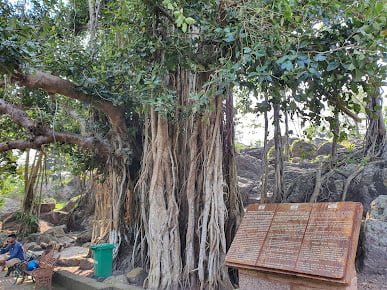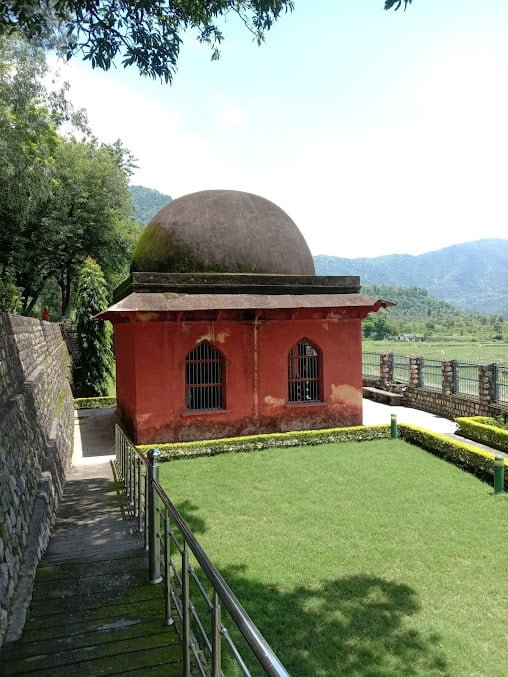Uttarakhand, the divine land filled with the refreshing aura, offering you the visual treat has yet another reason to draw you to this epitome of heaven. This state has numerous sites with a lot of cultural and heritage importance. Take you to one such site which is known for the rock edicts of Emperor Ashoka, who is famous for his greatness all over the world.
While going from Dehradun to Kalsi, a small river meets the Yamuna river some distance before Kalsi, Amlava. The 13th inscription in the fourteen inscriptions of the Maurya king Ashoka is situated at the confluence of the Amlava and Yamuna rivers. This place holds significant importance as in entire North India only Kalsi has an inscription of Emperor Ashoka. During the Mahabharata period, the ruler of Kalsi was King Virat and his capital was Biratnagar. At the time of exile, Pandavas changed their form and stayed with King Virat. The Chinese traveler Hiuen Tsang identified this area as ‘Sudhnagar’ in the seventh century. It is believed that the destruction of the stupas of Kalsi took place in 1254 AD. It was discovered by the British man Forrest in 1860 AD.



The Kalsi inscription is built on a big rock. In this inscription, the figure of an elephant has been made, under which the word Gajetam is written. The elephant is shown descending from the sky. The height of this structure is 10 feet and the width is 8 feet. The Kalsi region has been addressed with the word “Aparant” and Kalsi residents with the word “Pulinda”. The inscription is related to the internal administration of Ashoka.
Along with this, the rock tells about the emperor’s attitude, moral, spiritual, and fatherly relationship with the subjects, his commitment to non-violence, and the emperor’s renunciation in the war. Ashoka had made prohibitive and experimental policies for these works. These prohibitive policies of Ashoka included worldly entertainment, animal sacrifice, indulgence in unnecessary activities, self-control in self-examination and practical policies, self-restraint, purity of mind, qatgyat, service to parents, service, and charity to brahmins and sanyasis and religious subjects. But there is a speech of mutual reconciliation.
This rock has its importance. The language of the articles written on this rock is Prakrit and the script is Brahmi. Situated amidst the pristine nature, one can get an ample amount of knowledge about the reign of this greatest ruler. These inscriptions located in Kalsi give evidence that these teachings propounded by Emperor Ashoka were not mere sermons. These were also used in practice. This is a treasure of our history. If you are someone who loves to get connected to the great Indian history and explore our legacy, you must check out this place.
What is written in Kalsi Rock Edict?
The Kalsi rock edict is written in the Brahmi script and contains a message from the Indian emperor Ashoka, who ruled from 269 BCE to 232 BCE. In the edict, Ashoka urges his subjects to follow the principles of dharma, or righteousness, and to refrain from violence and other harmful actions. The edict also emphasizes the importance of treating all beings with kindness and compassion. Here is a translation of part of the edict:
“Beloved-of-the-Gods, King Piyadasi, speaks thus: In the past, kings who were devoted to dharma and to the well-being of their subjects were very zealous in promoting dharma, and in their devotion to dharma, they were very careful about the duties of their subjects as well as their own duties. However, these days, people perform acts of dharma only for show, and they have become indifferent to dharma in their hearts.”
The edict goes on to exhort the people to follow the path of dharma and to show kindness and compassion to all beings, including animals. It also mentions the importance of education and the role of the government in promoting the welfare of its subjects.
Where is Kalsi Rock Edict?
The Kalsi rock edict is located in the town of Kalsi, which is in the Dehradun district of the Indian state of Uttarakhand. Kalsi is located in the northern part of India, about 200 kilometers northwest of the city of Delhi. The edict is inscribed on a rock that is located near the confluence of the Yamuna and Tons rivers. It is a popular tourist destination, and visitors can see the edict and learn more about the history and culture of the region.
Location & How to Reach Kalsi
Kalsi is located in the Dehradun district of the Indian state of Uttarakhand, about 200 kilometers northwest of the city of Delhi. It is easily accessible by road and rail.
By Road: Kalsi is well-connected to major cities and towns in the region by a network of roads. It is about 27 kilometers from Dehradun, the capital city of Uttarakhand, and can be reached by hiring a taxi or taking a bus from Dehradun.
By Rail: The nearest railway station to Kalsi is Dehradun Railway Station, which is well-connected to major cities such as Delhi, Mumbai, and Kolkata by trains. From Dehradun, Kalsi can be reached by hiring a taxi or taking a bus.
By Air: The nearest airport to Kalsi is Jolly Grant Airport in Dehradun, which is well-connected to major cities in India by flights. From the airport, Kalsi can be reached by hiring a taxi or taking a bus.
Places to visit near Kalsi
- Dehradun: Located about 27 kilometers from Kalsi, Dehradun is the capital city of Uttarakhand and a popular tourist destination. It is known for its beautiful natural surroundings, including the Himalayas and the Ganges, as well as its cultural and historical sites, such as the Laxman Siddh Temple and the Tapkeshwar Temple.
- Mussoorie: Located about 49 kilometers from Kalsi, Mussoorie is a beautiful hill station located in the foothills of the Himalayas. It is known for its scenic beauty, with panoramic views of the surrounding mountain ranges, and is a popular destination for hiking and other outdoor activities.
- Rishikesh: Located about 60 kilometers from Kalsi, Rishikesh is a city located on the banks of the Ganges and is known as the “Yoga Capital of the World”. It is a popular destination for spiritual seekers and is home to many ashrams and temples, including the Parmarth Niketan Ashram and the Laxman Jhula Temple.
- Haridwar: Located about 83 kilometers from Kalsi, Haridwar is a city located on the banks of the Ganges and is one of the seven holiest places in Hinduism. It is a popular destination for pilgrims and is known for its many temples and ashrams, including the Har Ki Pauri Temple and the Chandi Devi Temple.
- Dhanaulti: Located about 83 kilometers from Kalsi, Dhanaulti is a small hill station located in the Garhwal region of Uttarakhand. It is known for its stunning views of the Himalayas and is a popular destination for trekking and other outdoor activities.






